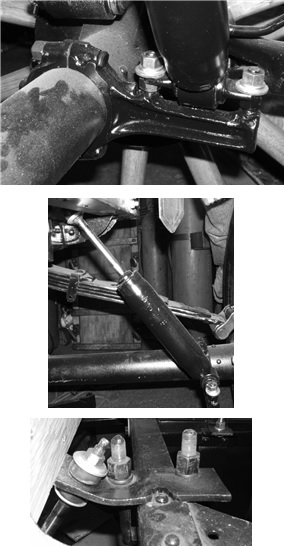Shock Absorbers
by Tom Carnegie
For both ride comfort and safety, shock absorbers are a must.
Ford came out with shock absorbers as an option in 1926. These were cable-type snubbers.
One mounted near the center of the frame in the the front and rear with a cable attached
to the axle, near the center. I cannot attest to the efficacy of this kind of shock as I
have never, to my knowledge driven a car with these on it.
In 1928 the model A came with
four wheel hydraulic leveraction shocks. These were found to be very effective.
Without shocks, a car with transverse springs will tend to bounce sideways when it hits a
bump. Also, the rear wheels often will "tramp" when you apply the brakes. Also, a car with
shocks is much more stable in turns. It tends to "hold the road".
Most of the desired effect of shocks can be achieved on a model T with only the rear ones
installed. I have installed shocks on a number of model T's using Ford 351 Windsor connecting rods and
shocks off of a 1980 Nissan 310. The 351 Windsor rods are easy to obtain from most any
automotive machine shop.
I just cut them off and weld a couple of bolts onto them to mount
the lower end of the shock. The upper end is then mounted into a plate that is made out of
a piece of 3/8" steel. It is bent and 3 holes are drilled into it to match the u-bolt and
upper shock hole. U-bolts can usually be found at the local hardware store. When completed,
this shock setup is 100 percent bolted on and can easily be removed for show if desired.
